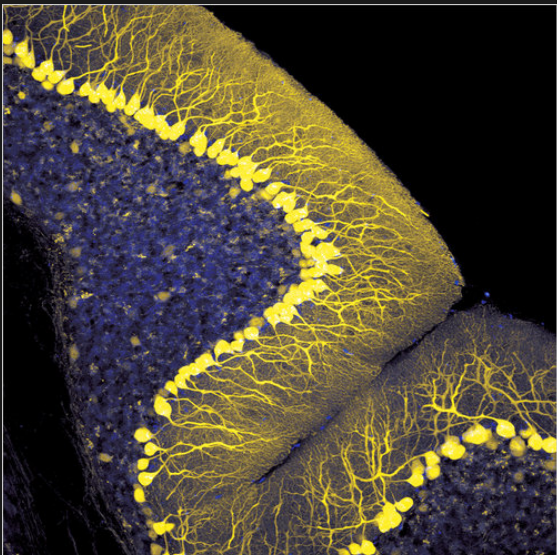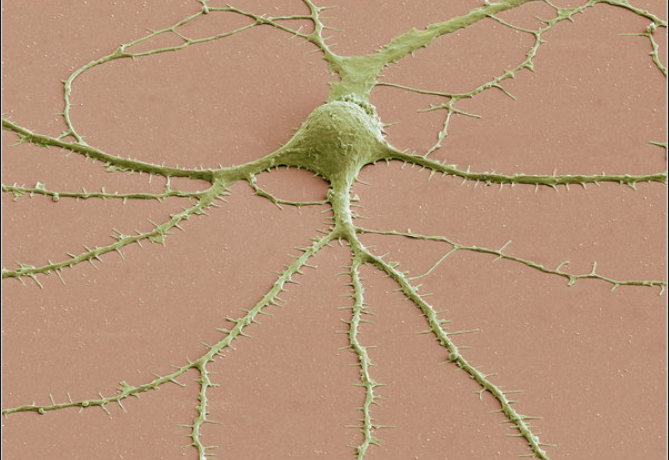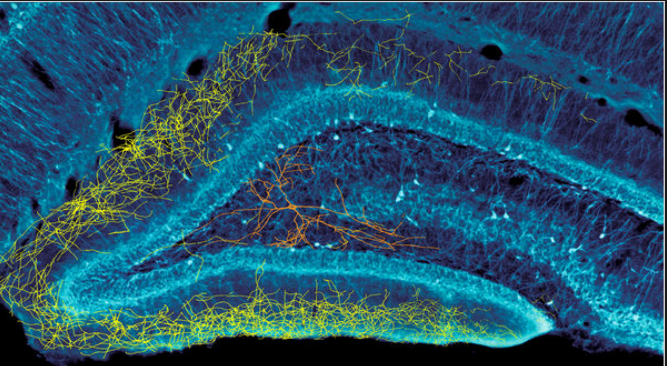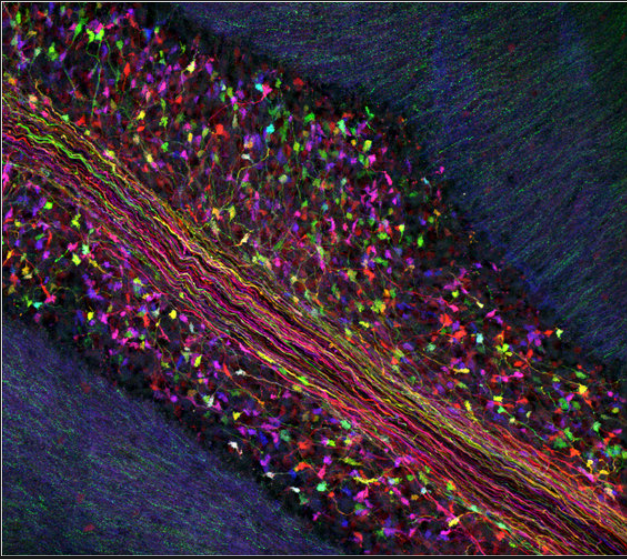From the NYT, these electron microscopy photos are strangely beautiful:
The last few decades have produced an explosion of new techniques for probing the blobby, unprepossessing brain in search of the thinking, feeling, suffering, scheming mind. But the field remains technologically complicated, out of reach for the average nonscientist, and still defined by research so basic that the human connection, the usual “hook” by which abstruse science captures general interest, is often missing.
Carl Schoonover took this all as a challenge. Mr. Schoonover, 27, is midway through a Ph.D. program in neuroscience at Columbia, and thought he would try to find a different hook. He decided to draw the general reader into his subject with the sheer beauty of its images.
So he has compiled them into a glossy new art book. “Portraits of the Mind: Visualizing the Brain From Antiquity to the 21st Century,” newly published by Abrams, includes short essays by prominent neuroscientists and long captions by Mr. Schoonover — but its words take second place to the gorgeous imagery, from the first delicate depictions of neurons sketched in prim Victorian black and white to the giant Technicolor splashes the same structures make across 21st-century LED screens.
Scientists are routinely seduced by beauty. Mr. Schoonover knows this firsthand, as he acknowledged in an interview: for a while his wallet held snapshots not of friends or family, but of particularly attractive neurons. Sometimes the aesthetics of the image itself captivate. Sometimes the thrill is the magic of a dead-on fabulous technique for getting at elusive data.
Particularly attractive neurons:
Cerebellar Purkinje neurons
Spiny neuron
Chick retina
Rabies
Subnetwork
Cerebellum
Neocortex
>
Source:
Slide Show <br>http://www.nytimes.com/slideshow/2010/11/29/science/20101130-brain.html
Odyssey Through the Brain
ABIGAIL ZUGER, M.D.
NYT, November 29, 2010
http://www.nytimes.com/2010/11/30/science/30brain.html









What's been said:
Discussions found on the web: